Declutter Like A Pro 7 Things Designers Would Never Keep And 6 They Always Approve
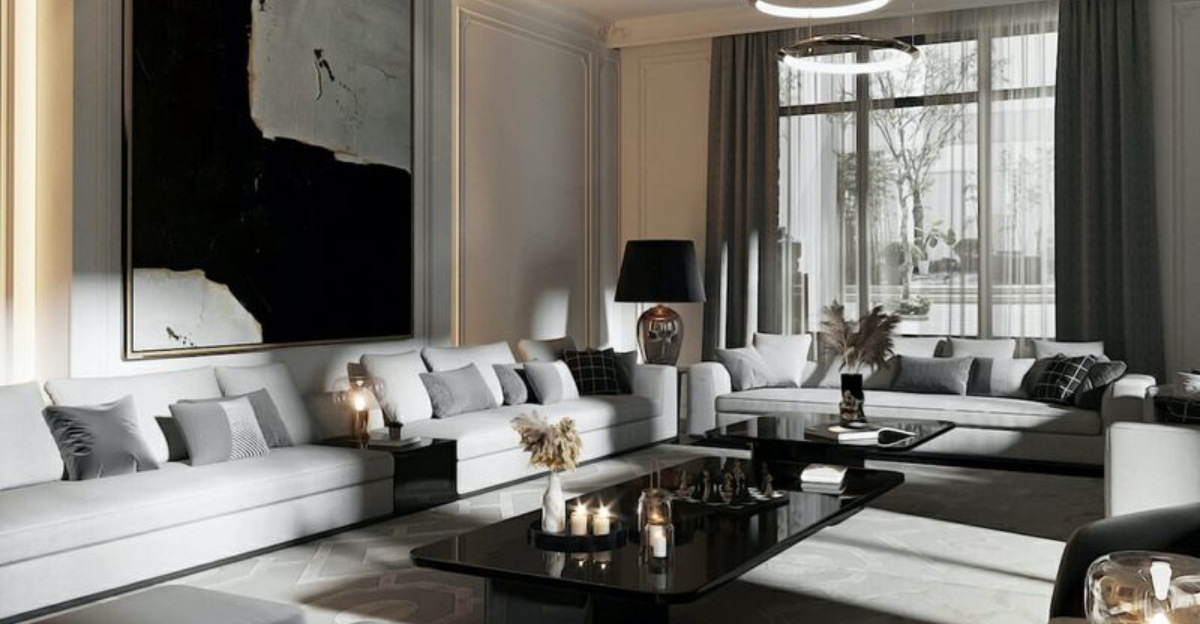
Ever wonder how interior designers keep spaces looking so clean and put-together?
The secret lies in knowing what to toss and what to treasure. Professional designers have clear rules about what deserves space in your home and what needs to hit the road.
Let me share their insider wisdom to help transform your cluttered space into a magazine-worthy haven.
1. Excess Paperwork

Old bills, random notes, and junk mail create visual chaos that makes designers cringe. Professional organizers recommend keeping only essential documents and digitizing everything else.
When paper piles up, your brain registers it as unfinished business, creating subtle stress you might not even notice. This mental weight follows you around your home, making relaxation nearly impossible.
Consider investing in a simple filing system with three categories: action items, reference materials, and items to archive. Anything that doesn’t fit these categories should head straight to the shredder. Your space and mind will thank you for the breathing room.
2. Old Magazines

Magazine collections quickly transform from inspiration to eyesore. Those glossy publications you’ve been saving ‘just in case’ are actually collecting dust and taking up valuable real estate in your home.
If you haven’t opened them in three months, chances are you never will. Designers recommend tearing out only the pages that truly inspire you and organizing them in a single inspiration binder. This preserves the ideas while eliminating bulky stacks.
For the truly digital-savvy, apps like Pinterest let you save all those design ideas without the physical clutter. Remember, the goal isn’t to hoard inspiration but to create space for actually implementing those brilliant ideas.
3. Worn-Out Clothes
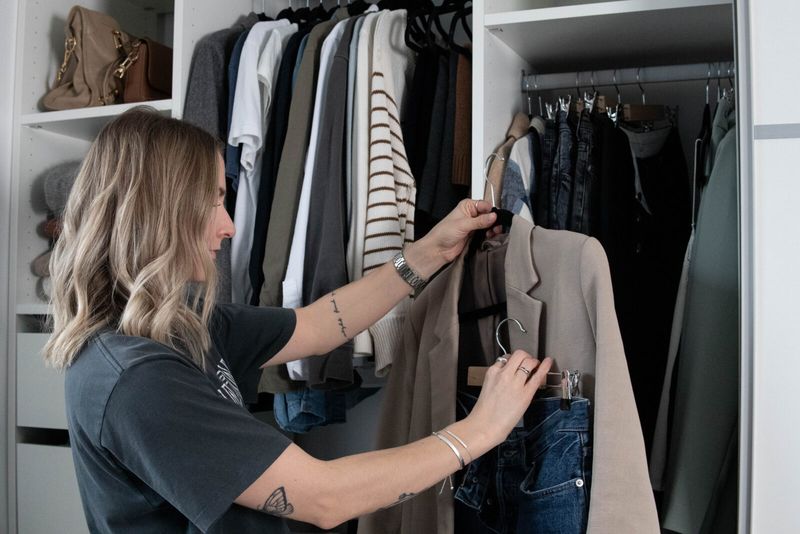
Those faded t-shirts with stretched-out necks and jeans with frayed hems aren’t ‘vintage’ – they’re just tired. Designers know that clothing clutter spills into living spaces, creating visual noise even when tucked away.
Your closet should function like a personal boutique, filled only with items that make you feel confident and put-together. When clothes no longer serve this purpose, they’ve lost their value to you.
Try the one-year rule: if you haven’t worn it in 12 months, it’s time to donate. Keep only pieces that fit well and make you feel great. This simple principle transforms not just your closet but how you feel in your space every single day.
4. Broken Electronics
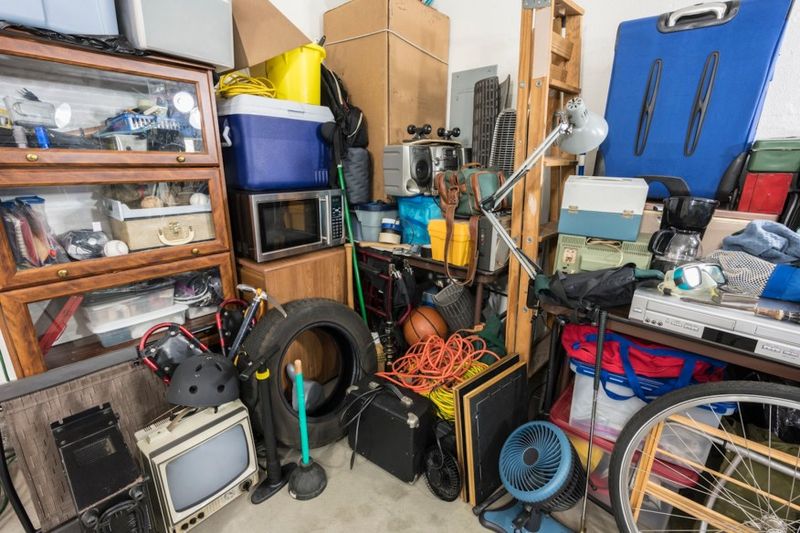
That printer that ‘just needs a new part’ has been collecting dust for two years. Designers absolutely refuse to let broken electronics linger in beautiful spaces they create visual clutter and psychological weight.
We often keep these items with good intentions, planning to fix them someday. But that someday rarely comes, and meanwhile, they take up valuable space and create mental burden.
If you haven’t fixed it within a month of breaking, you probably won’t. Research proper electronics recycling in your area and free yourself from these technological ghosts. Removing these items creates immediate visual relief and makes room for functioning tools that actually enhance your daily life.
5. Expired Food
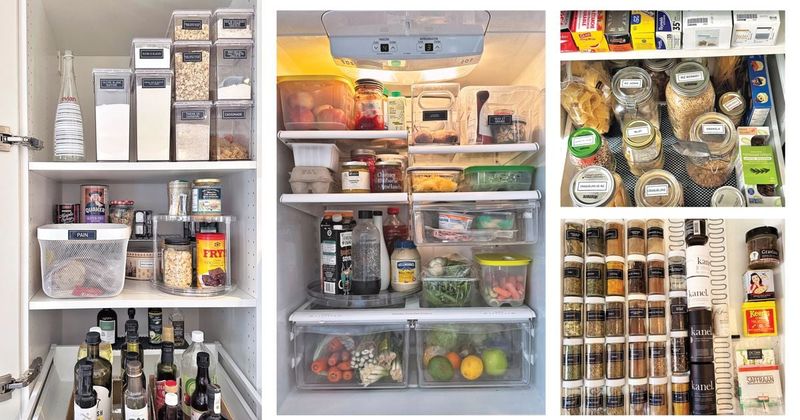
Mystery containers and ancient condiments lurking in the back of your fridge would make any designer shudder. Beyond being unsightly, expired food creates invisible clutter that affects how you feel in your kitchen.
Professional organizers suggest a weekly fridge clean-out before grocery shopping. This simple habit prevents waste and keeps your refrigerator looking intentional rather than chaotic.
Apply the same principle to your pantry clear containers with labels make ingredients visible and accessible. When you can actually see what you have, you’re less likely to buy duplicates or waste food. This approach transforms your kitchen from a storage unit for forgotten items into a functional space that inspires cooking.
6. Unused Gadgets

Bread makers, juicers, and specialty appliances often represent aspirational cooking that rarely happens. Designers know these bulky items eat up counter and cabinet space while providing minimal value to most homeowners.
If you haven’t used a gadget in six months, it’s probably not aligned with your actual lifestyle. Be honest about your cooking habits and keep only tools that support how you really live, not how you wish you lived.
For occasional needs, consider borrowing from friends or family instead of permanent ownership. This philosophy applies beyond the kitchen too exercise equipment, crafting tools, and other single-purpose items should earn their keep or find a new home. Your space should reflect your authentic life, not a fantasy version.
7. Tangled Cords
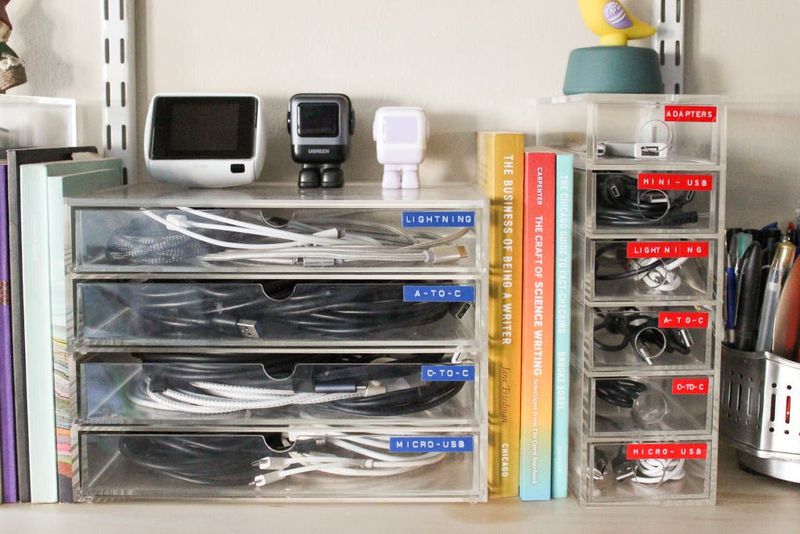
Nothing ruins a sleek design faster than a nest of cables snaking across your floor. Designers consider visible cord clutter the nemesis of beautiful spaces it’s distracting, collects dust, and creates visual chaos.
Modern solutions include cord covers that match your wall color, cable management boxes, and furniture with built-in charging stations. These simple fixes transform the look of your electronics area instantly.
For cords you must keep, try color-coding with washi tape or dedicated cord organizers. Bonus tip: photograph the back of complicated setups before unplugging, so reconnection is stress-free. This small change makes a dramatic difference in how polished and intentional your space feels, especially in home offices and entertainment areas.
8. Open Shelving
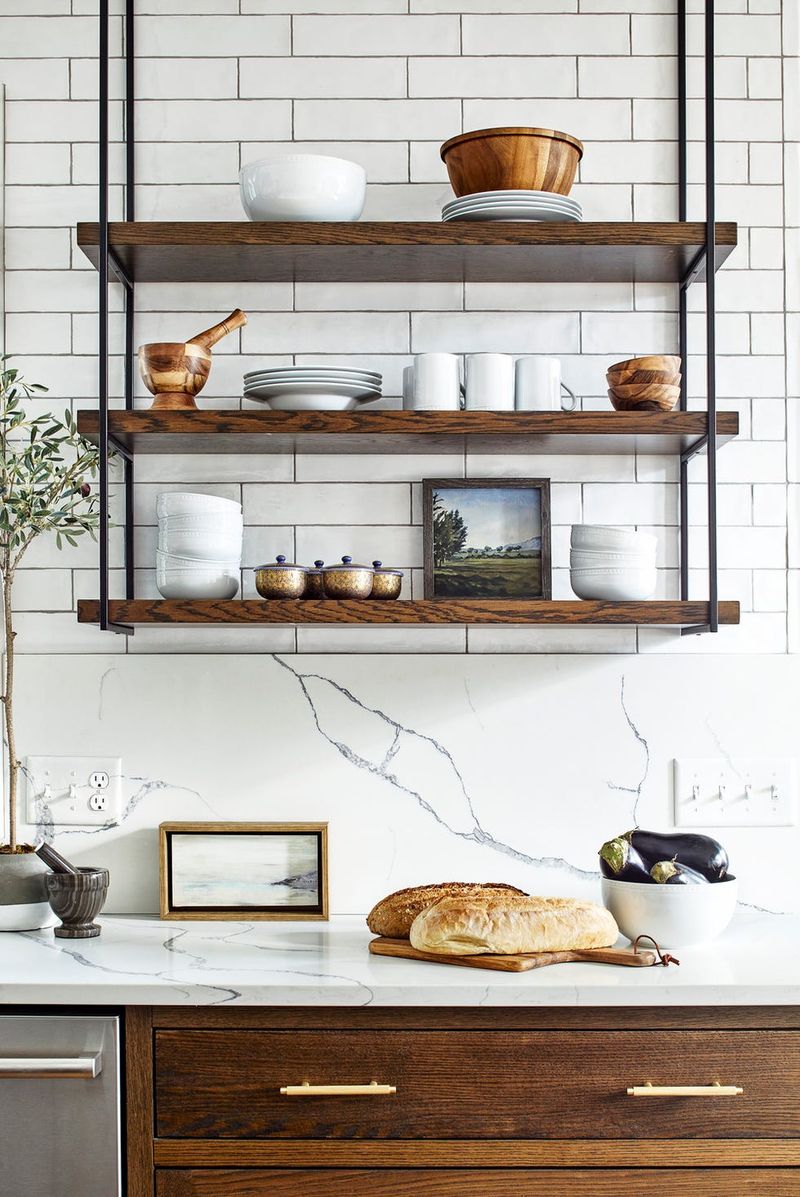
Designers love open shelving for its ability to showcase personality while maintaining order. Unlike closed cabinets that hide clutter, open shelves encourage thoughtful curation of your belongings.
The key lies in displaying items with similar colors or themes, creating visual groupings that feel intentional rather than random. Think carefully edited collections rather than storage dumping grounds.
For functional spaces like kitchens, designers recommend keeping everyday items on these shelves. This strategy ensures regular use prevents dust buildup while maintaining the display’s aesthetic appeal. The beauty of open shelving is how it forces you to be mindful about what you own if it’s not beautiful or useful enough to display, perhaps it doesn’t deserve space in your home.
9. Minimalist Decor

Less truly is more in the designer’s handbook. Professional interior designers consistently embrace minimalist decor not as a trend but as a timeless approach to creating peaceful spaces.
The magic happens when each item serves a purpose or brings genuine joy. Quality trumps quantity every time – one stunning vase makes more impact than five mediocre ones crowded together.
Designers recommend starting with a completely empty surface, then adding back only items that enhance the space. This approach forces intentionality and prevents the gradual accumulation that leads to clutter. Remember that negative space – the empty areas between objects – is actually a design element itself, allowing your special pieces to shine while giving your eyes places to rest.
10. Green Plants

Living greenery tops every designer’s must-have list. Plants bring texture, color, and literal life to spaces that might otherwise feel static or cold.
Beyond aesthetics, plants improve air quality and have been shown to reduce stress levels – making them functional as well as beautiful. Designers strategically place them to soften architectural lines and create visual flow between different areas.
Even if you lack a green thumb, low-maintenance options like snake plants, pothos, and ZZ plants thrive with minimal attention. The key is selecting appropriately-sized plants for your space a statement fiddle leaf fig for larger areas and small succulents for tabletops. This living element connects indoor spaces to nature, creating a subtle but powerful sense of wellbeing.
11. Clear Containers

Transparent storage solutions earn universal designer approval for their blend of function and aesthetics. Clear containers transform organization from a hidden necessity to a visible design element.
In pantries, these containers allow you to see inventory at a glance while creating a cohesive, boutique-like appearance. Designers particularly value how they encourage mindful purchasing when pasta is stored in a beautiful glass jar, you’re less likely to buy more until it’s truly needed.
This principle extends beyond kitchens to bathrooms, offices, and craft spaces. The visual consistency of matching containers creates order even among diverse contents. For maximum impact, choose containers in similar shapes with simple labels, allowing the contents themselves to provide color and texture to your organized spaces.
12. Functional Furniture

Smart designers prioritize pieces that pull double-duty in your space. Storage ottomans, expandable dining tables, and murphy beds exemplify this philosophy of functionality without sacrificing style.
This approach isn’t about cramming more stuff into your home. Instead, it’s about thoughtfully selecting versatile pieces that adapt to different needs while maintaining clean lines. The best functional furniture solves problems you face daily.
When shopping, ask yourself: Does this solve a storage challenge? Can it serve multiple purposes? Will it adapt as my needs change? These questions lead to investments that truly enhance your lifestyle rather than just filling space. The result is a home that works smarter, not harder exactly what professional designers strive to create.
13. Proper Lighting
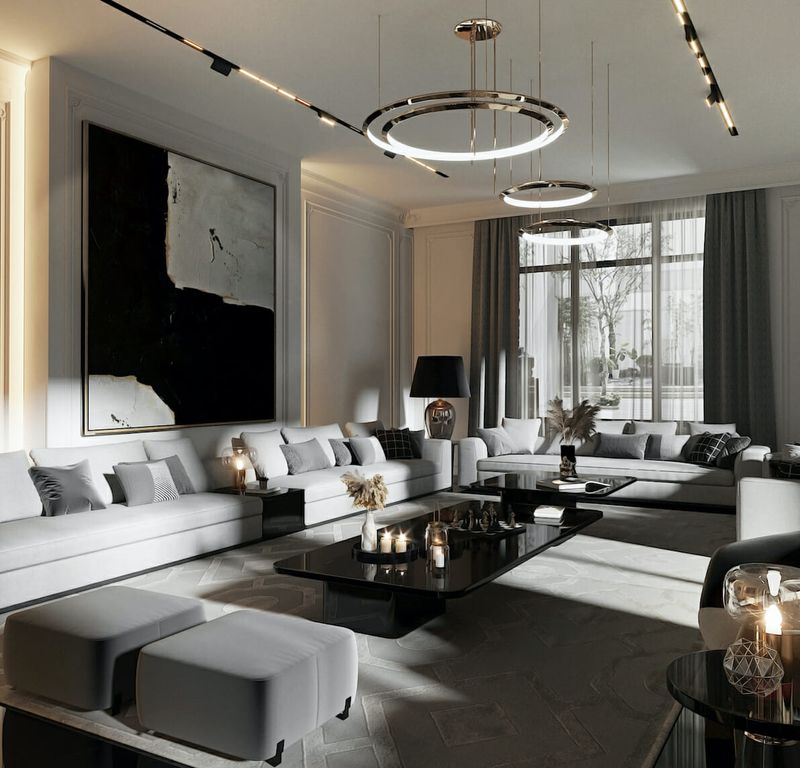
Designers consider lighting the secret weapon of beautiful spaces. Unlike the harsh overhead lights many homes come with, professional lighting creates layers of illumination that transform how rooms feel.
The designer approach includes three essential types: ambient lighting for general illumination, task lighting for specific activities, and accent lighting to highlight architectural features or art. These layers create depth and dimension impossible to achieve with a single light source.
Table lamps, floor lamps, and sconces at various heights create this crucial layering effect. Smart bulb choices matter too warm light (2700-3000K) creates inviting spaces while cooler tones work better for task-oriented areas. This thoughtful approach to lighting doesn’t just illuminate your space it completely transforms the mood and functionality.






